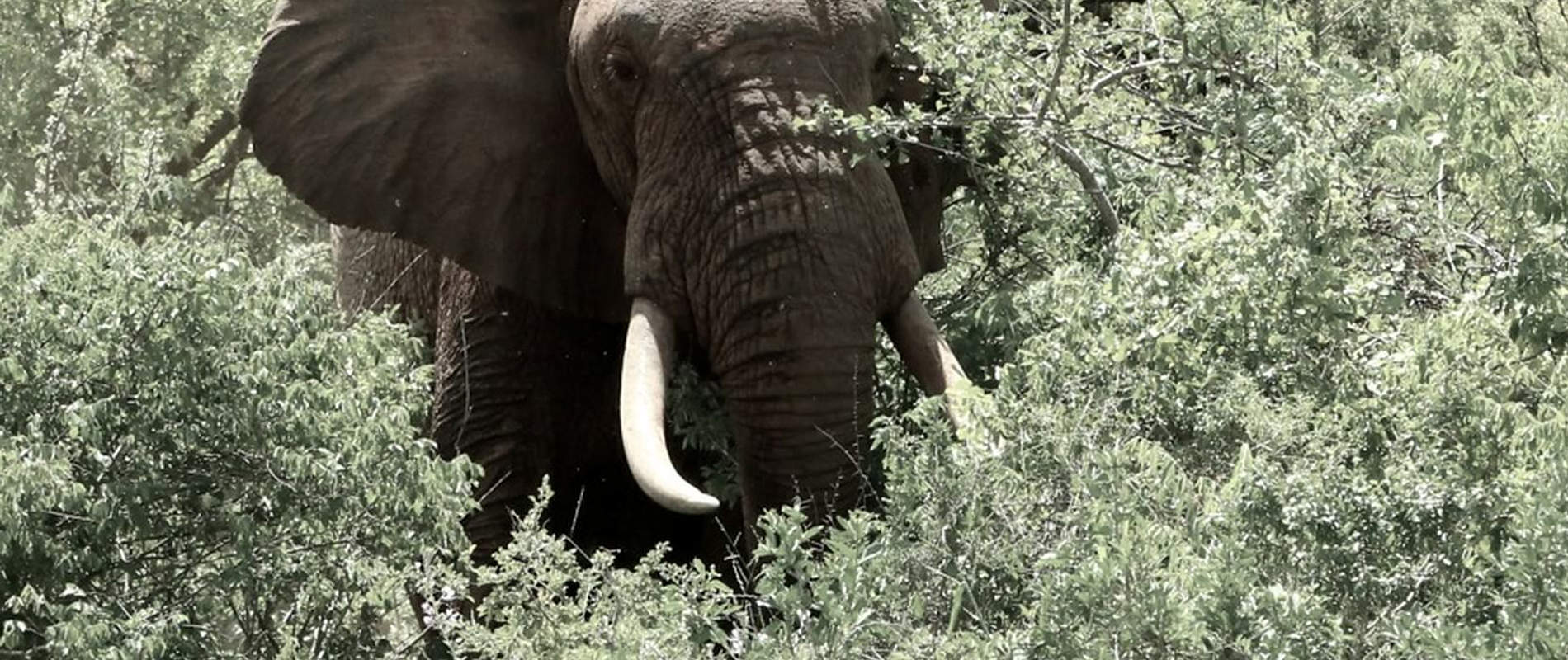As pressure for space and arable farming land in Kenya grows, we are increasingly seeing farming areas impinge on protected areas like Tsavo National Park
As pressure for space and arable farming land in Kenya grows, we are increasingly seeing farming areas impinge on protected areas like Tsavo National Park. The south-western border of Tsavo East was originally an important elephant corridor connecting Tsavo West, Tsavo East and the Chyulu Hills. This area has since been encroached on with a human population estimated to be over 50,000 people. The inhabitants mainly depend on subsistence agriculture and charcoal burning for their livelihoods. As such often the meeting between elephants and humans intensifies and becomes violent, especially during dry or drought conditions when elephants are particularly hungry and view crops as an easy and delicious meal. Communities are tired of sharing their food and income with the elephants, but as their areas are encroached upon and elephants struggle through the dry season, something has to be done to ultimately protect the two species from each other. Elephant-beehive fences are an innovative, sustainable and natural deterrent for elephant incursion first introduced by Dr. Lucy King of Save the Elephants. The project offers a wealth of benefits to the farmers through improved pollination of crops and other plants, farm protection against elephants, and income from the sale of the honey they harvest, whilst elephants receive protection in return.




Over the last two years, the DSWT working together with the local communities inhabiting the north-western border of Tsavo East, have erected a 2.6km long elephant-beehive fence with 131 beehives on seven forefront farms bordering the park. In 2015 the DSWT’s Community Outreach team installed 94 beehives covering 1.8Km around five farms in Iviani village. After this initial phase it was quickly realised that the project is only as successful as the farmers are interested; if farmers don’t maintain the hives and care for the bees (providing fresh water and protecting them from invaders such as ants, waxmoths and honey badgers) the hives will be unproductive. Since then we have reverted to the original model initiated by Dr Lucy King, by only targeting those farms that are interested and enthusiastic from the outset and building individual fences around an entire property, rather than building a fence around multiple properties without confidence that every participant will hold up their end of the project. The fence is only as strong as its weakest link and by fencing individual farms, the farmer becomes solely responsible for the fence’s success rather than relying on a neighbour to do the work for them. By handpicking enthusiastic farmers we increase the chances of the fences being successful and proving a suitable model for others to copy.




With the above lesson in mind in January and February 2016, a further 34 beehives were installed in two farms in Kyusiani village covering a total of 0.7 Km. Currently, in Iviani 23 of the hives installed are occupied while in Kyusiani 9 hives are occupied by bees. In targeting those farms interested, 7 hives were added to a farm in Kyusyani to completely close the farm off to marauding elephants, and a further 23 hives will be added to a new farm fence in the same area, 2 of which are already occupied.


The fences work so that a series of hives alternating with dummy hives are suspended between posts and attached to the next in line with a wire. When an elephant walks into the fence it shakes the wires and the bees from the nearest hive attack the offending elephant, who walks away in the other direction suffering some discomfort but no serious harm. A big challenge for the hives early on was the attack from honey badgers, and the hives were modified with an extra iron sheet to prevent these intruders from climbing up. Overall we have seen that the bee-fences have made a difference to those farms where they have been installed. Two farmers on different occasions have witnessed elephants getting stung when they disturbed hives whilst attempting to break through the fence. On many other occasions, farmers have woken in the morning and found footprints of elephants that have walked up to and along the fence before giving up and heading back into the Park. One elephant found an unoccupied hive and managed to break in successfully, but the damage was minimal. Dr. Lucy King reports an 80% success rate (out of every 10 attempts for elephants to get through these fences, only 2 are successful). Furthermore, the elephants that do break through are predominantly lone bulls and do considerably less damage than an entire family herd of elephants.





One unforeseen benefit we have found from installing the bee-hive fences is the improved community relations with those villages, and as such our intelligence gathering in those areas has also grown. Farmers are much more engaging and open to discussing illegal activities in the area, which is good information for our anti-poaching teams on the ground and further protects all manner of wildlife.






















